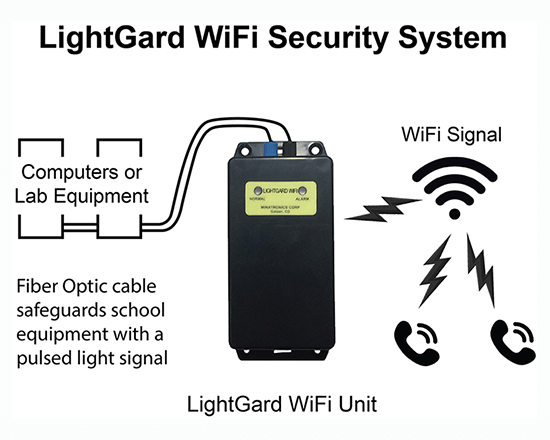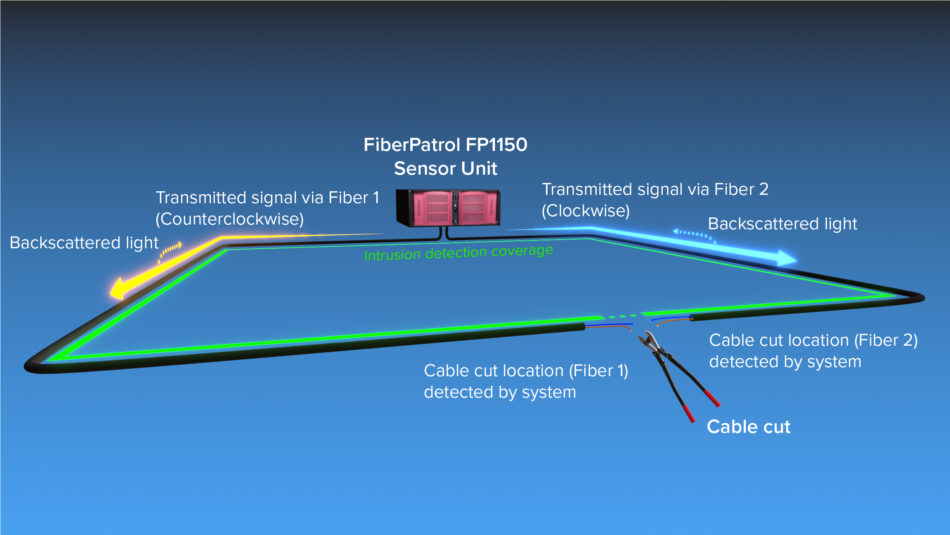Enhance Your Safety With Advanced Fiber Optic Security Systems
In an age where safety is critical, innovative fiber optic security systems provide an engaging remedy for improving safety throughout numerous settings. What implications do these advancements hold for future security procedures?
Benefits of Fiber Optic Safety
Taking advantage of the benefits of fiber optic technology significantly enhances safety and security systems across various applications. One of the key advantages is the enhanced data transfer capability, permitting the transmission of big amounts of information at high rates. This is specifically critical for real-time video clip security, where high-resolution feeds can be sent out without latency, making sure prompt reaction capacities.
Furthermore, optical fiber exhibit superior resistance to electro-magnetic interference, which is essential in settings with possible signal disturbances. This dependability guarantees constant efficiency in vital safety procedures. Fiber optic cords are less prone to tapping and unauthorized accessibility contrasted to standard copper electrical wiring, consequently enhancing information honesty and confidentiality.
Another remarkable benefit is the toughness of fiber optic systems; they are much more immune to ecological elements such as dampness, temperature level variations, and destructive materials. This strength equates to reduce maintenance prices and longer life expectancies for safety and security installations.
Last but not least, the lightweight nature of fiber optic wires facilitates simpler setup and routing, specifically in complex infrastructures (fiber optic security system). Inevitably, the combination of fiber optic modern technology into safety systems not only boosts security procedures however additionally maximizes operational effectiveness
Trick Attributes to Take Into Consideration
When examining fiber optic protection systems, numerous vital features need to be taken into consideration to make sure optimal performance and efficiency. Initially, assess the system's detection range and sensitivity; an extensive range enables monitoring big areas, while high level of sensitivity makes certain that even small disruptions are detected promptly.
Next, take into consideration the combination abilities of the system. A fiber optic protection system need to effortlessly user interface with existing security actions such as cams and alarms, producing a natural security network.
Durability and ecological resistance are likewise essential functions. Ensure that the system is designed to hold up against extreme weather and prospective physical threats, as this will certainly lengthen its functional lifespan.

Lastly, check into the scalability of the system. A durable fiber optic safety and security system must be quickly expandable to suit future demands without substantial overhauls. By very carefully considering these attributes, you can select a fiber optic safety and security remedy that improves safety and security and safety and security in your environment.
Installment Process Summary
To efficiently implement a fiber optic safety system, a systematic installation procedure is important. This procedure my site begins with a thorough website assessment to figure out the specific security needs and to determine optimum locations for fiber optic cables and safety tools. Following this assessment, the setup group will certainly develop an in-depth strategy, including wire pathways, necessary devices, and conformity with local policies.
Following, the installation includes laying the fiber optic cords, guaranteeing they are shielded from environmental elements and physical damage. Appropriate handling strategies are important, as fiber optic cables are sensitive and can be easily damaged. After the cabling is installed, connectors and terminations are carefully finished to ensure signal integrity.
The subsequent phase includes mounting protection devices such as electronic cameras, activity detectors, and alarm, all incorporated with the fiber optic network. Extensive testing is performed to confirm that all elements are functioning appropriately and to make sure optimum performance.

Contrasting Fiber Optic to Standard Solutions
The development of safety innovation has led to substantial innovations in the contrast between fiber optic systems and traditional copper-based systems. Fiber optic systems make use of light to transmit information, supplying remarkable data transfer and rate compared to their copper counterparts. This results in improved information transmission capacities, making optical fiber excellent for high-resolution video security and real-time tracking.
In addition, fiber optic cable televisions are resistant to electromagnetic disturbance, lowering the possibility of signal degradation caused by exterior variables. This particular guarantees constant performance, also in tough environments. On the other hand, traditional copper systems are much more at risk to interference, leading to possible susceptabilities in safety applications.
Sturdiness is one more benefit of fiber optic systems. They are less susceptible to harm from ecological elements such as wetness and temperature changes, which can compromise copper electrical wiring. Fiber optics are lighter and thinner, enabling for easier installment and decreased physical impact.
Nonetheless, informative post traditional systems have a tendency to have reduced first expenses, making them eye-catching for budget-conscious jobs. While fiber optic systems might call for a greater upfront financial investment, their lasting advantages-- such as reduced upkeep costs and higher dependability-- commonly outweigh the preliminary cost, positioning them as an exceptional selection for contemporary security requirements.
Future Trends in Protection Technology
Emerging trends in safety and security technology are positioned to change the landscape of security and danger detection - fiber optic security system. As companies increasingly encounter advanced hazards, innovations such as expert system (AI) and device understanding (ML) are becoming important to safety and security systems. These technologies improve the capability of fiber optic systems by enabling her response real-time information analysis, recognizing anomalies, and automating feedbacks to possible violations
Additionally, the integration of the Net of Points (IoT) is transforming security frameworks. IoT devices can give thorough situational awareness and promote seamless interaction between different safety and security components. This interconnectedness permits much more efficient surveillance and faster case response times.
Biometric verification is additionally acquiring momentum, supplying a greater degree of security via unique physical qualities. As this modern technology advances, it is likely to be incorporated right into fiber optic systems for improved gain access to control.
Conclusion
In conclusion, progressed fiber optic protection systems represent a significant development in safety and security and security innovation. The transition from conventional systems to fiber optic remedies reflects an expanding trend towards extra reliable and reliable safety and security actions in a progressively complicated technological landscape.